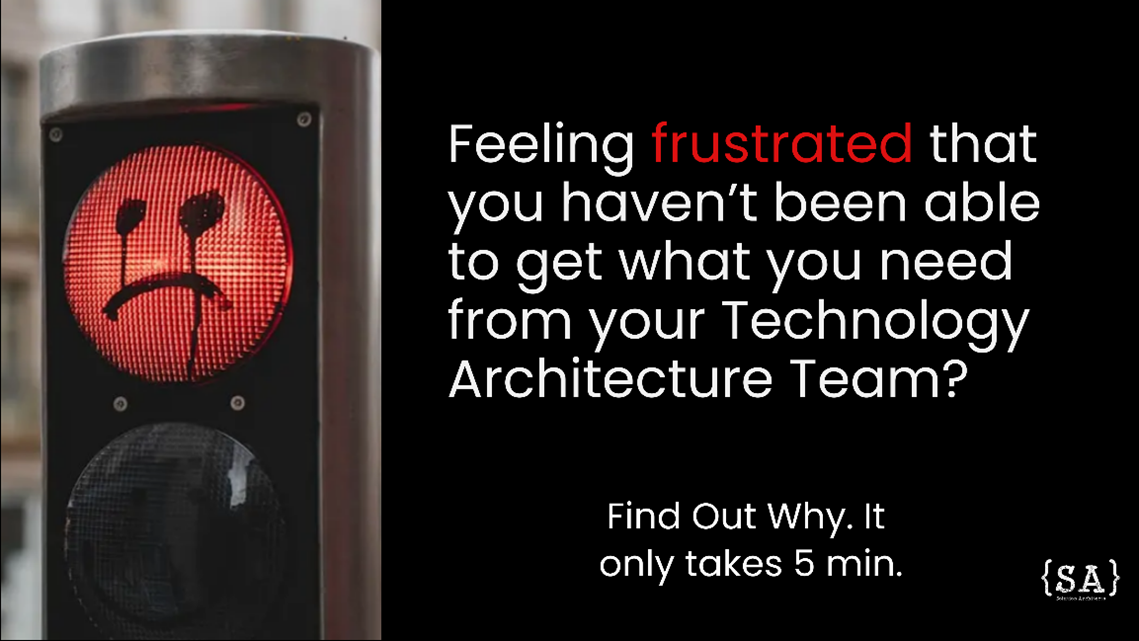A CIO's Most Underutilised Tool
Sharpen it and use it properly, it will be a game changer.
Kasun Siriwardene
Managing Director

I have targeted this short article to the CIO (or CTO), but this applies to many CxO roles in an organisation, that may own the technology planning and delivery function of the business. Stick with me to the end, as this will address many of the concerns and risks I hear from senior execs. Also, bear with me as this is not an AI written article, so you will have to put up with my writing style.
Problematic world of a CIO
The modern CIO’s job is not an easy task- let me give you a rundown of how the conversations usually go:
- Being put under pressure to bring in AI to the organisation and to have an AI strategy, but not having the foundational capability to deliver real value.
- Many boards are questioning ROI from previous investments, such as multi-million dollar ERPs not delivering the outcomes they expected.
- Constantly worried about cyber security issues and considering the recent Medibank and Qantas breaches in Australia, I can’t blame them.
- Digital transformations failing and not delivering the original promises.
- Budgets are shrinking but being asked to deliver more with less.
Sign In or Create a Free SA Academy Account to Access
**** Potential Trigger Warning for CIOs ****
I have targeted this short article to the CIO (or CTO), but this applies to many CxO roles in an organisation, that may own the technology planning and delivery function of the business. Stick with me to the end, as this will address many of the concerns and risks I hear from senior execs. Also, bear with me as this is not an AI written article, so you will have to put up with my writing style.
Problematic world of a CIO
The modern CIO’s job is not an easy task- let me give you a rundown of how the conversations usually go:
- Being put under pressure to bring in AI to the organisation and to have an AI strategy, but not having the foundational capability to deliver real value.
- Many boards are questioning ROI from previous investments, such as multi-million dollar ERPs not delivering the outcomes they expected.
- Constantly worried about cyber security issues and considering the recent Medibank and Qantas breaches in Australia, I can’t blame them.
- Digital transformations failing and not delivering the original promises.
- Budgets are shrinking but being asked to deliver more with less.
- Technology talent being hard to find.
- Vendors are selling their platforms and products, which attempt to fix a solution before they even understand the problem.
- Business maturity is low and not being able to articulate a clear business strategy, but being expected to deliver a robust, agile and secure technology platform at low cost.
- Technology is changing rapidly and locking down on a moving target is difficult.
- Not having full visibility across all the technology I’m accountable for.
I’m sure some of these must resonate with you and I’m not telling you anything new, so let’s get to the main point.
One of the biggest, most underutilised tools in the CIO arsenal is the Architecture Practice. By ‘Architecture Practice’, I mean a mature capability, able to deliver end-to-end architecture needs at a strategic level and at the same time, support the delivery function. At this point, if you are thinking that we are not big enough to have an architecture team, or I don’t have one, or even worse, the vendors manage the architecture for me, keep reading as I have some solutions for you.
This is where I’m going to say something controversial. Many CIOs don’t know what a good architecture practice looks like. To be honest, I don’t blame them. You only judge the capability it offers, based on your past experiences. It’s like if you’ve only had instant coffee all your life, you would never know the fruity flavour depth of a barista expresso with Ethiopian beans can offer. The Architecture Practice is the same.
More and more architects are pure techies, rather than strategic thinkers or the bridge that translate business language to solutions. So, most CIOs only see the occasional good architect, not a well-oiled machine that operates as a high performing team. Also, this is not about trying to build the ‘architecture dream team’, it’s about getting the core capabilities working in a mature, pragmatic way.
So, what does good look like?
The Architecture Practice (when set up properly) is your internal consultancy and advisory capability for strategic planning, delivery alignment and risk mitigation.If I was CIO, this would be my expectation from an Architecture Practice:
Help me action the strategic vision
- Support me to create the business and IT strategy into a target state architecture that I can take to the senior leadership or board.
- Have a position on all core capabilities the organisation needs as the ‘architect’ I can rely on.
- Deliver the high-level technology roadmaps to deliver the target state architecture.
- Help me validate technology hypothesis quickly and efficiently.
- Give me options, with just enough details to make strategic decisions.
Be my technical excellence & standards body
- Lead the organisational architecture standards, patterns, policies and best practices in the organisation.
- Deliver an efficient architecture led decision making forum/process.
- Deliver a set of architecture principles designed to drive the strategy in the right direction and embed the right behaviours across the tech teams.
Be the canary in the coal mine and call out risks early
- Proactively manage the technology stack, so I know well in advance before technology contract renewals and end-of-life cycles occur in order to plan strategic changes, if needed.
- Proactively identify and mitigate technical risks and escalate risks directly to me.
- Proactively manage company security architecture to maintain strong security postures.
Be the voice of technology leadership across the business
- Be the bridge between business stakeholders, vendors and development teams.
- Communicate complex technical concepts clearly to non-technical audiences.
- Be the technology leaders and advocates to drive change.
Be an active part of my vendor & technology evaluation process
- Help evaluate the right technologies for the organisation by clearly articulating enterprise level trade-offs between options.
- Manage the vendor relationships and help filter the sales hype versus the actual technology capabilities.
- Validate and challenge vendor claims, be my defence against hype.
- Stay ahead of the tech trends and be a sounding board to test industry trends against organisational readiness and capability fit.
Drive delivery enablement and create quality outcomes
- Enable faster, reliable delivery by providing clear guidance for projects, vendors and development teams.
- Drive Enterprise Architecture vision via Solution Architectures into the delivery space.
- Manage delivery governance.
- Call out delivery risks before it eventuates.
How do I Transform My Architecture Practice?
If your Architecture Practice is not delivering the above to you as the CIO, and this not an exhaustive list either, you need ask why. You have made a significant investment into maintaining the capability and need to maximise this investment. Many CIOs, depending on the size and scale of the organisation, will spend at least 2-3 million or more per year on the practice. Once set up properly, the Architecture Practice easily delivers more than 10X the original investment in planning and mobilisation speed, risk mitigation, maximising technology investments, reducing wrong investments, delivering business agility, keeping the vendors honest, and so on. The issue is most organisations underutilise this capability and barely recoup the initial investment value.Where do I start? Take our 5 minute - Architecture Practice Maturity Assessment.
The SA Practice Maturity Assessment Tool below will benchmark where your current capability stands. The assessment only takes 5 minutes of your time and will provide you with some immediate recommendations to get more value out of the team. However, if you are in need of immediate action with your Architecture Practice, schedule a discovery call now, or you can also reach out to me directly to book in a detailed maturity assessment and roadmap to transform your team.
For the CIO who does not have the Architecture Practice Capability
If you are a CIO who has no architecture capability, explore developing the capability with ‘as-a-service’ models, or if you can justify the ROI, build it from scratch properly.
Architecture-as-a-Service models are being offered by more and more companies in the architecture space, but I want to make a clear distinction about what it is and isn’t. Building a practice capability by leveraging the Architecture-as-a-Service model, is not code for a body shop to drop architecture resources - that’s just a resource augmentation model rebadged. There is a place for it, but this does not give you a complete architecture practice capability.
If you are going to explore Architecture-as-a-Service models to support you, you need to work out what services in the architecture services catalogue can be effectively leveraged as a service. For example, you could potentially leverage some governance elements, such as our Architecture Review Board (ARB)-as-a-Service, that works alongside your internal teams. This option requires a longer conversation and beyond the scope of this article, but you can always reach out to me and explore how to approach it.
Conclusion
Finally, going back to my coffee analogy, you don’t know what you are missing out on until you see what good looks like. If you have an internal team, you owe it to yourself to sharpen the tools and use it how it was meant to. If done right, it will be a game changer.Image credit: Fiskars
Kasun Siriwardene
Benefits of joining the SA Academy
-
Events
Join a vibrant architecture community and participate in exciting monthly discussion events online! -
Courses
Unlock your potential with architecture courses designed by expert architects boasting 20 years of industry experience, packed with real-world insights and successful client outcomes! -
Insights
Unlock exclusive access to our FREE insights gathered while delivering architecture consultancy across diverse industries! -
Coaching
Get 1:1 or Group architecture coaching services designed to help you achieve your goals and grow your expertise.


